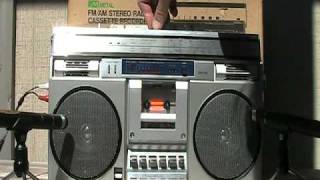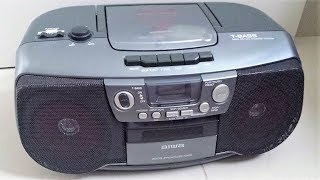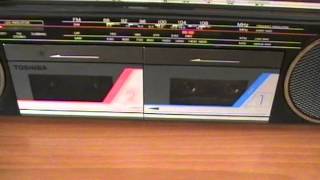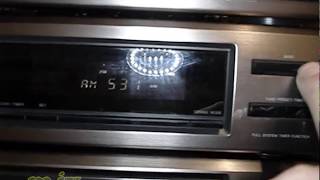Thursday, 25 December, 2025г.
















Где искать: по сайтам Запорожской области, статьи, видео ролики
пример: покупка автомобиля в Запорожье
Aiwa JS175 Personal Stereo
When Sony Corporation introduced the Walkman personal stereo, it was only able to play cassettes. While some people questioned the wisdom of producing a cassette player without the ability to record, the product was a huge success. Sony and many other companies have sold millions of portable stereos that played everything from the radio to CDs.
Personal stereos that can record to cassette are much less common. Sony did produce a few models with recording capability through the 1980s and 1990s, some of which are very highly regarded. So did a few other companies, including Aiwa. The Aiwa JS175 shown here was probably produced in the late 1990s or early 2000s, at a time when the cassette tape format was declining in popularity. As such, it's a little surprising to see all the features built into this unit...support for high bias tape playback, a built in speaker, recording capability, tape counter and even a battery life indicator. Rather surprisingly, there isn't a built in microphone (or a provision to use the front mounted speaker as a microphone when it's turned off) or Dolby B noise reduction circuitry.
There are good and bad things about this unit. The good:
- Tape speed stability is excellent for a machine of this type.
- The built in speaker actually doesn't sound horrible.
- Tape Counter
- Good playback performance on normal and high bias tapes.
- Battery life seems to be excellent.
- Performance of the built in tuner is outstanding on AM and FM.
- Stereo microphone recording support.
- Separate amplifiers are used for speaker and headphone output. The headphone amplifier will drive just about any pair of headphones I tried (both high and low impedance types) to very high levels of volume while staying clean. It's strong enough to drive small speakers.
- I found the service manual available for download online.
The bad:
- The tape recording circuitry is very noisy with recordings made from the microphone or radio.
- High bias tape support is playback only (though this unit's limited power supply may have made high bias tape recording unrealistic to implement)
- The tuning dial is hard to see and difficult to operate with any kind of precision.
- The tape mechanism seems to mistrack somewhat during playback. I didn't clean the tape path, although it did not seem dirty. You can hear this in the video. (I'm not sure what caused the tape dropouts with the recording examples.)
- The AM tuner is not a high fidelity, wide audio bandwidth type.
- FM stereo reception always seems to be a bit noisy.
- No provision to supply bias current to a microphone that requires it (including this probably would have required removal of or a separate jack for stereo microphone input).
The metal and normal bias playback demonstration tapes were recorded on a Technics RS-M218 cassette deck (AC bias). The type IV metal tape was a Sony Metal XR 60 minute type, and the type I "normal" tape was a TDK D90.
As for the aspect ratio problems, let's just say that I have yet to find a way to edit together videos from the various DV camcorders I've got and the Canon FS200 with any kind of good result. Different editing software would certainly work and while I do have a copy of Sony Vegas 10, I have yet to sit down and get acquainted with it. I also have iMovie '09, but I utterly despise editing in that software for so many reasons. The "hair monologue" clip was never really intended to show up in a video, but I thought it entertaining and therefore threw it in for the SPECIAL introduction on this video. And for those wondering, the core of this video was shot at the same time I recorded the Sony ICF-C770 clock radio video. It took me a while to get it all put together.
Tags: uxwbill aiwa js175 personal stereo cassette player recorder normal high bias compact cassette (invention) tape use demonstrate explore [editor: and of course] bizzarefurhead trolololololol
Теги:
uxwbill aiwa js175 personal stereo cassette player cassette recorder normal bias high bias compact cassette (invention) tape use demonstrate explore trolololololol bizzarefurhead
Похожие видео
Мой аккаунт


 У вашего броузера проблема в совместимости с HTML5
У вашего броузера проблема в совместимости с HTML5


